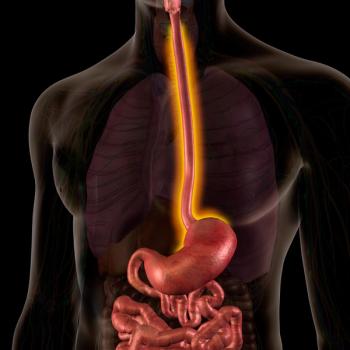
Provider Relief Funds Continue to Flow into Nation’s Healthcare System
So far, hospitals and other healthcare providers have received approximately $125 billion of the $175 billion allocated to the federal Provider Relief Fund to cover costs related to coronavirus care. This injection of resources has helped providers manage the costs related to the coronavirus, but it has also raised questions about the requirements for accepting and spending the funds.
So far in 2020, hospitals and other healthcare providers have received approximately $125 billion of the $175 billion allocated to the federal Provider Relief Fund (PRF) to cover costs related to coronavirus care. This enormous injection of resources into the nation’s healthcare system has helped providers manage the costs related to the coronavirus, but it has also raised questions about the requirements for accepting and spending the funds.
Early on, providers who received PRF funds had to accept or reject the money without information about reporting and auditing requirements. However, Health and Human Services (HHS), which is administering all PRF funds, has since established reporting and audit requirements. On the HHS website, the agency continues to provide updates on application requirements for new funding rounds as well as reporting requirements for all PRF funds.
Who will receive Phase 3 funds?
HHS announced a third phase of PRF funding on Oct. 1, 2020. For this round, HHS expanded eligible recipients to include:
- Providers that received, rejected or accepted a previous PRF distribution or combined distributions that did not equate to at least 2% of their annual patient revenue.
- Behavioral health providers
- Providers that began operations between Jan. 1, 2020 and March 31, 2020.
Unlike previous distributions, which were released based on information the federal government was able to gather, this round of funding will be distributed based on applications submitted by providers.
Providers that have already received PRF payments equal to 2% of their annual patient revenue are eligible to apply to receive a potential add-on payment from this funding round.
HHS will review submissions to determine whether the applicant has already received approximately 2% of its annual patient revenue in previous PRF funding. If not, a true up payment will be made to bring the applicant up to this approximate percentage amount when combined with any other Provider Relief Funds received.
The remainder of the $20 billion will be distributed by calculating an equitable add-on payment based on changes in operating revenues and expenses and other PRF funds the provider has already received.
Reporting requirements
As with other PRF funding, recipients will be required to attest to certain terms and conditions. HHS is making webinars and other resources available to providers to explain application and reporting processes.
The following is a summary of some of the key elements of current PRF reporting requirements. It does not apply to the Nursing Home Infection Control and Rural Health Clinic Testing or the HRSA Uninsured Program funding streams.
Recipients will report the use of their funds in two categories. The first allows the recipient to report any healthcare related expenses due to COVID-19 that were not reimbursed from another source. The second is for any PRFs received in excess of the healthcare related COVID-19 expenses. The entity may be allowed to attribute funds in the second category to lost revenue.
Health care related expenses
HHS has divided PRF recipients into two groups for the part of the reporting section entitled “Expenses Attributable to Coronavirus Not Reimbursed by Other Sources.” Those receiving between $10,000 and $499,999 will take a broader approach and report expenses in two categories: 1.) general and administrative (G&A) expenses and 2.) other healthcare related expenses. Recipients of $500,000 or more will be required to provide detailed information about their expenditures by subgroups. Subgroups for G&A include rent, insurance, personnel, fringe benefits, lease payments, utilities, and other G&A. Subgroups for other healthcare related expenditures include supplies, equipment, information technology, facilities, and other healthcare related expenses.
Lost revenues
For PRFs in excess of qualifying expenditures, recipients should determine whether any of the PRF payments could offset lost revenues. Recipients are allowed to offset lost revenues up to the amount of the difference between the 2019 and 2020 patient care revenue. Patient care revenue should be broken down by payer mix as follows: Medicare Part A & B, Medicare Part C, Medicaid, Commercial Insurance, Self-Pay (no insurance and other.
In the section of the reporting module “Lost Revenues Attributable to Coronavirus,” recipients provide the total patient revenue, by quarter, for both 2019 and 2020. The entity also must disclose other funding received from the following sources: SBA and CARES Act/PPP; FEMA CARES Act; CARES Act testing; local, state, and tribal government assistance; business insurance; and other assistance.
Non-financial data
The HHS reporting system also will require certain non-financial data. Demographic information will include the reporting entity, the tax identification number, the national provider identifier, the fiscal year end date, and the federal tax classification. Recipients will need to provide, by quarter, personnel metrics, patient metrics, and facility metrics. The personnel metrics may include labor by category, hires and rehires, and terminations. Patient metrics will require information such as number of patient visits, patients admitted, and resident patients.
If there was a change in ownership for the reporting entity, certain details around the acquisition or divestiture must be disclosed. Finally, the entity should disclose whether it is subject to a Single Audit and whether the auditors have selected PRF to be within the scope of the Single Audit.
The reporting system will become available to recipients in early 2021. Recipients that have expended all funds prior to Dec. 31, 2020 may submit one report. If a recipient has expenditures subsequent to Dec. 31, 2020, a second and final report will be required.
HHS will continue to provide information and updates in webinars and FAQ guidance leading up to the reporting deadlines.
Looking ahead
Inevitably, swift federal action results in fiduciary requirements for recipients. The onus will be on health care providers to ensure compliance with audit and reporting requirements that are still evolving. To avoid surprises, providers should continue to stay abreast of
Author, Anna Stevens, CPA, CHFP is the Partner-in-Charge of Health Care Services at Weaver, a national CPA and advisory firm.
Newsletter
Get the latest industry news, event updates, and more from Managed healthcare Executive.
















































